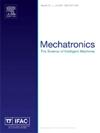MR-FLOUR: Multi-robot Relative localization based on the Fusion of LiDAR, Odometry, and UWB Ranging
IF 3.1
3区 计算机科学
Q2 AUTOMATION & CONTROL SYSTEMS
引用次数: 0
Abstract
Accurate relative localization of multiple robots is crucial for efficient collaboration and teaming, where a prior map of the environment is often unavailable. In this context, proximal robot detection plays an important role in improving relative localization accuracy by providing essential spatial awareness. While LiDAR is a common choice for detecting nearby robots, it struggles to distinguish them from surrounding obstacles, especially in cluttered environments. To address this challenge, we introduce MR-FLOUR, which stands for Multiple-robot Relative localization based on the Fusion of LiDAR detection outcomes, Odometry, and UWB Ranging. The main innovation of our approach is the use of different sensors for proximal robot detection and the introduction of our LiDAR detection constraint for optimization. First, we propose an efficient method to integrate UWB ranging with LiDAR data for proximal robot detection. We cluster the LiDAR point cloud and apply circle-fitting on the clusters based on the expected radius of the robot to reject clusters that do not conform to the expected shape of the robot. Then match the UWB ranging with cluster distances to determine nearby robot positions. Next, we estimate the identified robot’s orientation from successive detections, with outliers filtered using short-term odometry data. Finally, through Pose Graph Optimization (PGO), we fuse odometry and UWB ranging constraints with our proposed LiDAR detection constraint, which not only accounts for the position and orientation estimations of the nearby robots but also incorporates the relative pose estimation between them. Our method improves the localization accuracy of traditional UWB localization by incorporating LiDAR detection constraints when in Line-Of-Sight (LOS). In Non-Line-Of-Sight (NLOS) conditions or when no nearby robot detections are available, it relies on UWB and odometry for localization. We validated the approach with three robots in three indoor environments, achieving up to 33.3% improvement in translation and 45.5% in rotation over traditional UWB localization.
MR-FLOUR:基于LiDAR, Odometry和UWB测距融合的多机器人相对定位
多个机器人的精确相对定位对于有效的协作和团队合作至关重要,因为通常无法获得事先的环境地图。在这种情况下,近端机器人检测通过提供必要的空间感知,在提高相对定位精度方面发挥着重要作用。虽然激光雷达是检测附近机器人的常用选择,但它很难将它们与周围的障碍物区分开来,尤其是在混乱的环境中。为了应对这一挑战,我们引入了MR-FLOUR,即基于LiDAR检测结果、Odometry和UWB测距融合的多机器人相对定位。我们的方法的主要创新是使用不同的传感器进行近端机器人检测,并引入我们的激光雷达检测约束进行优化。首先,我们提出了一种有效的方法,将超宽带测距与激光雷达数据相结合,用于近端机器人检测。我们对LiDAR点云进行聚类,并根据机器人的期望半径对聚类进行圆拟合,以剔除不符合机器人期望形状的聚类。然后将超宽带测距与集群距离进行匹配,以确定附近机器人的位置。接下来,我们从连续的检测中估计识别机器人的方向,使用短期里程计数据过滤异常值。最后,通过姿态图优化(PGO),我们将距离测量和超宽带距离约束与我们提出的激光雷达检测约束融合在一起,不仅考虑了附近机器人的位置和方向估计,还结合了它们之间的相对姿态估计。该方法在视距(LOS)范围内结合激光雷达探测约束,提高了传统超宽带定位的精度。在非视距(NLOS)条件下或附近没有机器人检测时,它依靠超宽带和里程计进行定位。我们在三个室内环境中用三个机器人验证了该方法,与传统的UWB定位相比,平移速度提高了33.3%,旋转速度提高了45.5%。
本文章由计算机程序翻译,如有差异,请以英文原文为准。
求助全文
约1分钟内获得全文
求助全文
来源期刊

Mechatronics
工程技术-工程:电子与电气
CiteScore
5.90
自引率
9.10%
发文量
0
审稿时长
109 days
期刊介绍:
Mechatronics is the synergistic combination of precision mechanical engineering, electronic control and systems thinking in the design of products and manufacturing processes. It relates to the design of systems, devices and products aimed at achieving an optimal balance between basic mechanical structure and its overall control. The purpose of this journal is to provide rapid publication of topical papers featuring practical developments in mechatronics. It will cover a wide range of application areas including consumer product design, instrumentation, manufacturing methods, computer integration and process and device control, and will attract a readership from across the industrial and academic research spectrum. Particular importance will be attached to aspects of innovation in mechatronics design philosophy which illustrate the benefits obtainable by an a priori integration of functionality with embedded microprocessor control. A major item will be the design of machines, devices and systems possessing a degree of computer based intelligence. The journal seeks to publish research progress in this field with an emphasis on the applied rather than the theoretical. It will also serve the dual role of bringing greater recognition to this important area of engineering.
 求助内容:
求助内容: 应助结果提醒方式:
应助结果提醒方式:


